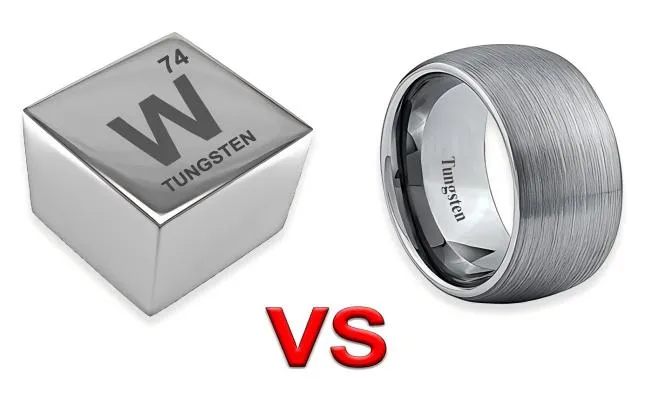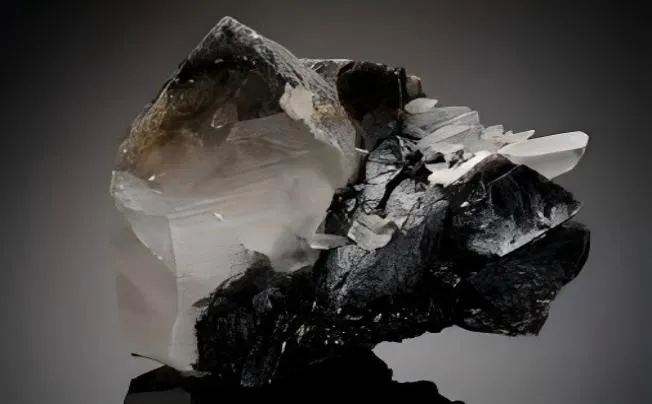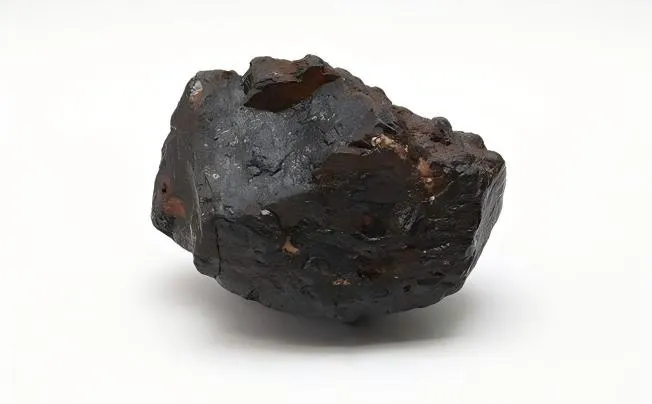What is Coal?
Definition and Formation
Coal is a fossil fuel formed from plant matter that accumulated over millions of years through geological processes. It begins with the accumulation of organic material, mainly plant debris, in swamps and marshes. Over time, this organic matter undergoes decomposition and burial under layers of sediment. The weight of the overlying sediment and the heat and pressure from geological processes transform this organic material into coal.
The formation of coal involves several stages: peat, lignite, sub-bituminous coal, bituminous coal, and anthracite. Peat is the precursor to coal and is partially decayed plant matter.
As peat is buried by further sediment, it undergoes physical and chemical changes that increase its carbon content and transforms it into higher forms of coal such as lignite, sub-bituminous, bituminous, and finally anthracite.
Types of Coal
Coal is classified into different types based on its carbon content, energy content, and geological origin:
- Anthracite: This is the highest rank of coal and has a very high carbon content (over 86%) and low moisture and ash content. It burns cleanly and efficiently, making it a valuable fuel source.
- Bituminous Coal: This is the most abundant type of coal globally and is known for its high energy content. It contains a carbon content ranging from 45% to 86% and is widely used in electricity generation and steel production.
- Lignite: Also known as brown coal, lignite is a lower-grade coal with a carbon content of around 25% to 35%. It has a high moisture content and low energy density, making it less efficient than higher-grade coals.
- Sub-bituminous Coal: This type of coal has a higher energy content than lignite and a lower carbon content than bituminous coal. It is primarily used for electricity generation due to its relatively clean-burning properties.
Properties of Coal
Coal's properties vary depending on its rank and type. Generally, coal is characterized by its carbon content, which increases with higher ranks of coal. Higher carbon content means more energy is released when the coal is burned.
The calorific value of coal, measured in BTUs per pound, is directly related to its carbon content and provides an indication of the energy it can produce. Other properties of coal include its moisture content, which affects its handling and combustion characteristics, and its ash content, which remains after burning and affects environmental emissions.
Sulfur content is another critical property, as it contributes to environmental pollution when coal is burned. Low sulfur content is desirable to minimize sulfur dioxide emissions, which can cause acid rain and respiratory issues.
What is Coke?
Definition and Production Process
Coke is a carbonaceous solid material derived from the destructive distillation of coal in a process known as coking. The transformation of coal into coke involves heating the coal in the absence of oxygen to drive off volatile compounds and moisture. This process is conducted in specialized coke ovens at temperatures as high as 2000 °F (1100°C).
During cooking, the volatile components (like water, methane, and tar) are removed, leaving behind a porous carbon-rich material known as coke. The coke produced is then cooled and either stored for later use or immediately used in various industrial applications.
Types of Coke
There are several types of coke, each tailored for specific industrial uses based on its quality and characteristics:
- Foundry Coke: This type of Coke is used primarily in foundries as a fuel for melting metals and shaping castings. Foundry coke needs to possess high heat stability and low reactivity to ensure efficient and controlled combustion during metal casting processes.
- Metallurgical Coke: Also known as "met coke," this coke variant is a critical component in the production of iron and steel through the blast furnace process. Metallurgical coke must have high mechanical strength, low porosity, and high carbon content to support the heavy demands of iron and steel production.
- Petroleum Coke: Although not derived from coal, petroleum coke (or "pet coke") is another carbonaceous material produced as a by-product of petroleum refining processes. It shares some similarities with coal-derived coke but has distinct properties that make it suitable for various industrial applications, including as a fuel in power generation and cement kilns.
Properties of Coke
Coke is distinguished by its high carbon content, typically ranging from 85% to 95%, significantly higher than coal. This high carbon content gives coke its desirable properties, such as high heat stability, low impurities (like sulfur and ash), and a porous structure that facilitates efficient combustion. The porosity of coke allows for the rapid and uniform release of heat during combustion, making it an ideal fuel for high-temperature industrial processes like steelmaking and metal casting.
In addition to its chemical properties, coke also exhibits physical characteristics that distinguish it from coal. It is hard, brittle, and dense, with a metallic lustre and a grey-black color.
Differences Between Coal and Coke
Composition
Coal and coke, despite their similar origins, exhibit stark differences in their composition. Coal, formed from the decomposition of organic matter over millions of years, comprises primarily carbon, along with variable amounts of impurities such as sulfur and ash.
These impurities not only affect the energy content of coal but also contribute to environmental concerns when combusted. In contrast, coke undergoes a transformative process known as coking, where impurities are effectively removed through heating.
This meticulous process results in coke being nearly pure carbon, making it a highly efficient fuel source with minimal environmental repercussions. The distinct composition of coal and coke underscores their disparate roles in various industrial applications, each tailored to suit specific requirements.
Usage
The utilization of coal and coke diverges significantly due to their unique properties and compositions. Coal, being rich in carbon and impurities, finds extensive application as a primary fuel source in power generation plants worldwide.
Its abundance, coupled with relatively straightforward extraction methods, has positioned coal as a cornerstone of global energy production. Conversely, coke's exceptional purity and high carbon content render it indispensable in specialized industrial processes, notably steelmaking.
Physical Properties
Coal, with its organic origins and heterogeneous composition, manifests as a soft, brittle substance, typically dark in color. This inherent brittleness facilitates its pulverization for combustion, albeit with accompanying challenges such as dust emissions and handling issues.
In contrast, coke undergoes a transformation during the coking process, resulting in a material with vastly different physical properties. The product of this metamorphosis is a hard, porous material, exhibiting a distinct grey hue.
These altered properties endow coke with superior durability and resistance to degradation, making it an ideal candidate for enduring the rigors of industrial processes. The evolution from soft and brittle to hard and porous underscores the transformative journey from coal to coke, reflecting the adaptability of natural resources to meet human needs.
Environmental Impact
The environmental ramifications of coal and coke utilization represent a critical consideration in the contemporary discourse surrounding energy production and industrial practices. Coal, while indispensable for meeting global energy demands, poses significant challenges due to its high emissions of pollutants such as sulfur dioxide and particulate matter.
The combustion of coal not only contributes to air pollution but also exacerbates climate change through the release of greenhouse gases. In contrast, coke's superior purity and cleaner combustion profile offer a more environmentally sustainable alternative, mitigating the adverse effects associated with coal utilization.
The adoption of coke in metallurgical processes represents a proactive step towards reducing industrial emissions and fostering a more ecologically conscious approach to resource utilization. By embracing cleaner alternatives like coke, industries can reconcile their energy needs with environmental stewardship, paving the way for a greener and more sustainable future.
Modern Applications and Challenges
Current Usage Trends for Coal and Coke
In contemporary industrial contexts, the usage of coal and coke reflects their distinct roles in energy and metallurgical industries. Coal remains pivotal in power generation, particularly in regions where it is abundant and cost-effective.
Despite advancements in renewable energy sources, coal-fired power plants still provide a significant portion of global electricity. In contrast, coke finds extensive application in metallurgical processes, especially in steelmaking.
Metallurgical coke, with its high carbon content and low impurities, is essential for the reduction of iron ore into molten iron, a crucial step in steel production. This demand underscores coke’s enduring relevance in heavy industries worldwide.
Environmental Concerns and Efforts Towards Cleaner Alternatives
The environmental impact of coal and coke usage is a subject of increasing concern. Coal combustion releases substantial amounts of carbon dioxide (CO2), sulfur dioxide (SO2), and particulate matter, contributing significantly to air pollution and greenhouse gas emissions.
Efforts to mitigate these impacts include advancements in clean coal technologies, such as carbon capture and storage (CCS) systems, which aim to capture CO2 emissions from coal-fired power plants and store them underground. Additionally, there is a growing shift towards renewable energy sources like solar, wind, and hydroelectric power, reducing reliance on coal for electricity generation.
Coke production also presents environmental challenges, albeit to a lesser extent than coal. The coking process itself generates emissions of CO2 and other pollutants.
Efforts to improve coke production’s environmental footprint involve optimizing coking technologies to enhance energy efficiency and reduce emissions. Furthermore, research into alternative materials for metallurgical processes, such as biomass-derived carbon sources or hydrogen-based iron reduction methods, holds promise for reducing the environmental impact of coke in steelmaking.







